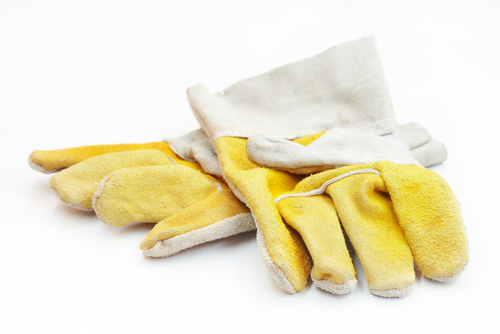 Your hands are one of your most valuable assets. Without them, you wouldn’t be able to touch, hold, feel, write, or gesture. In fact, you couldn’t do much of anything. Too often, however, we take them for granted. We don’t pay attention to how we treat or mistreat them! Just a few examples of when your hands should be protected is whenever you are cutting, painting, welding, or handling sharp metal or chemicals. And it is very important to wear the right glove for each specific task, since no one glove protects against all hazards.
Your hands are one of your most valuable assets. Without them, you wouldn’t be able to touch, hold, feel, write, or gesture. In fact, you couldn’t do much of anything. Too often, however, we take them for granted. We don’t pay attention to how we treat or mistreat them! Just a few examples of when your hands should be protected is whenever you are cutting, painting, welding, or handling sharp metal or chemicals. And it is very important to wear the right glove for each specific task, since no one glove protects against all hazards.
You now have even more reason to wear your protective equipment since OSHA has added hand safety to its standard on personal protective equipment. The standard requires workers to wear appropriate protection whenever their hands are exposed to hazards, and lists guidelines for employees to follow when selecting and purchasing the proper gloves. The following list points out the advantages and disadvantages of certain gloves.
The most widely used and “abused” glove material is cotton.
- Advantages: low cost, perspiration absorption, versatility in application, more cut resistance than leather, and moderate abrasion and heat protection.
- Disadvantages: cut protection is limited, short lifetime, and thermal-application range limited to about 400°F.
The next most widely used form of hand protection is leather.
- Advantages: good puncture and abrasion resistance, absorbs impact and helps cushion blows to the hand, shields against sparks, and greater thermal protection than cotton.
- Disadvantages: limited cut resistance and limited dexterity, depending on thickness of leather.
Natural rubber, neoprene, nitrile, and PVC are among many elastomers used for gloves.
- Advantages: liquid-proof for resistance against caustics, acids, and other chemicals.
- Disadvantages: offers limited cut resistance.
Metal mesh and other new fibers known as Kevlar, Spectra, and Vectran
- Advantages: flexible, cut resistant, lightweight, and resists thermal transfer.
- Disadvantages: may be costly.
Washes and creams: Wearing gloves is important, but it is also important to maintain personal hygiene and keep your hands clean to prevent infection. If you use barrier creams, always be sure to wash your hands before putting on the cream—and wash your hands at the end of the day when you are ready to go home. Barrier creams provide limited protection against alkali’s and acids, but are sometimes used in conjunction with gloves.
Another great hand-protection tool is premoistened, heavy-duty hand towels. Employees can use these towels to remove heavy grease and grime at their workstations or remote job sites.

